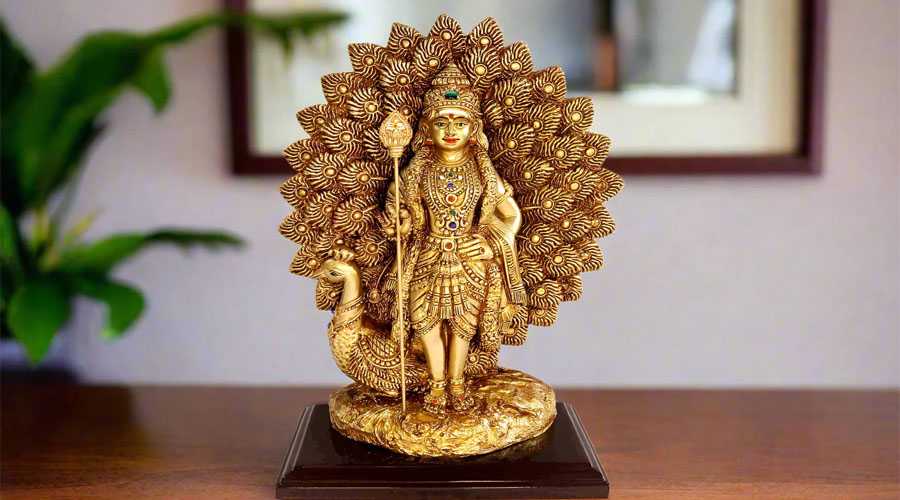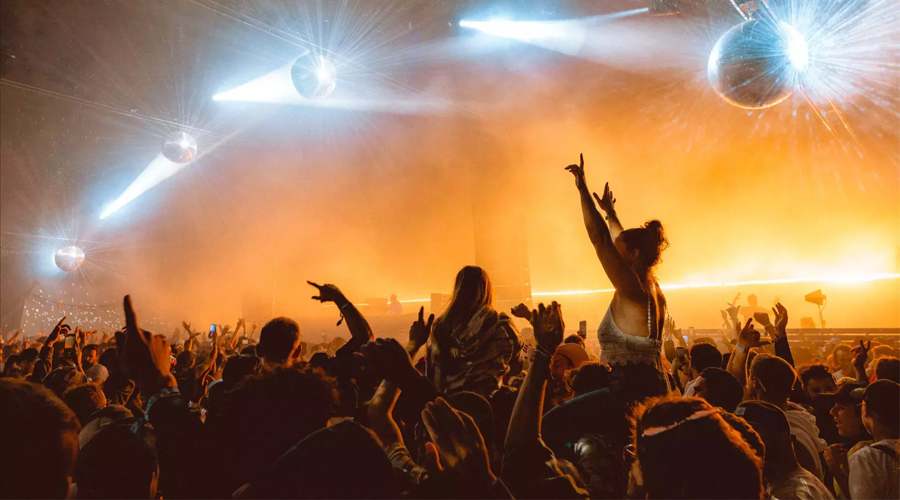Lord Murugan, also known as Kartikeya, Skanda, or Subramanya, is one of the most revered deities in Hinduism, especially among Tamil communities worldwide. Known as the god of war, victory, wisdom, and youth, Murugan boasts a rich mythology filled with divine symbolism, heroic deeds, and cultural significance. Here are some intriguing facts that reveal the depth and charm of this fascinating deity.
Six Faces and Divine Birth
One of the most unique features of Lord Murugan is his six faces. The name Shanmukha or Arumugan literally means “six-faced,” symbolizing his multi-dimensional nature embodying courage, wisdom, strength, compassion, and more. The mythological origins describe Murugan’s birth as a union of cosmic flames bursting from Lord Shiva’s third eye. These six sparks were carried by Agni (the fire god) to the sacred river Ganga and nurtured by six celestial nymphs called the Krittikas, who raised him as six infants. Later, Goddess Parvati unified these six forms into the singular six-faced deity known as Murugan. This allegory emphasizes divine energy, purity, and the extraordinary nature of his incarnation.
The God of War and Commander of the Gods
Murugan stands as the eternal warrior and commander of the gods’ armies. His primary mission was to defeat the demon Tarakasura, whose boon made him nearly invincible except against Shiva’s offspring. Born to Shiva and Parvati specifically for this purpose, Murugan’s victory over Tarakasura restored cosmic balance and ushered peace among the gods. His divine weapon, the Vel (a spear), gifted by Goddess Parvati, is a symbol of powerful knowledge and the destruction of evil and ignorance. This spear also represents spiritual insight and protection.
The Majestic Peacock and Rooster
Murugan’s vahana (mount) is the vibrant peacock named Paravani, which symbolizes beauty, pride, and the triumph of good over evil. According to legend, after defeating the demon Surapadma, Murugan showed compassion by transforming the demon into his vehicle, the peacock, and adopting the rooster as his banner. This unusual animal symbolism reflects the integration of power and gentleness as well as the victory over destructive forces. The rooster flag (Seval Kodi) is an emblematic representation of alertness and courage.
The Youthful and Handsome Deity
Lord Murugan is celebrated for his striking youthful beauty and charm, often depicted as an eternally young warrior with a calm and serene demeanor. Unlike his elder brother Ganesha, who is cheerful and plump, Murugan carries the aura of a disciplined and courageous leader. His boyish charm is so admired in Tamil culture that many parents name their sons Kartikeya hoping they inherit his handsomeness and valor. This aspect of Murugan as a “Kumara” or bachelor god emphasizes his association with eternal youth and purity.
The Divine Marriages: Valli and Deivayanai
Murugan’s mythology includes his divine marriages to two consorts, Valli and Deivayanai, symbolizing the balance of worldly love and divine grace. Deivayanai, the daughter of Indra (king of gods), represents divine and royal power, while Valli, a tribal huntress, symbolizes earthly love and devotion. These marriages signify Murugan’s role as a deity who connects the spiritual and mundane worlds, highlighting his accessibility and compassion toward devotees from all walks of life.
Festival and Worship
Murugan is especially venerated in Tamil Nadu and Sri Lanka, with major temples like the Arupadai Veedu (six abodes of Murugan) attracting millions of devotees annually. Festivals such as Thaipusam celebrate his victory over evil and involve devotional acts like carrying kavadis (burdens) as offerings and penance. The deity is also worshipped in many Southeast Asian countries where Tamil diaspora communities reside, reflecting his pan-regional cultural importance.
Symbolism and Philosophical Teachings
Beyond his warrior aspect, Murugan is revered as a philosopher and teacher. According to Shaiva Siddhanta philosophy, he embodies divine wisdom and righteousness, guiding devotees on the correct path to spiritual enlightenment. His Vel symbolizes sharp discernment to overcome ignorance, while his six faces represent his ability to perceive multiple truths simultaneously. Through his legends and teachings, Murugan inspires courage, moral strength, and intellectual growth.
Names and Regional Variations
Murugan is known by many names, reflecting his widespread worship and diverse attributes: Kartikeya, Skanda, Kumara, Shanmukha, Velan, and Senthilnathan are a few. In North India, he is often called Skanda, while in Tamil culture he is the beloved “Thamizh Kadavul” (Tamil God). His worship transcends India, with devotees in Malaysia, Singapore, and other countries celebrating his glory, attesting to his universal appeal.
Stories of Devotion and Wisdom
One famous tale highlights Murugan and Ganesha competing for a divine fruit of wisdom. While Murugan embarked on a global journey to win the fruit, Ganesha circled their parents, symbolizing that true wisdom lies in recognizing the divine in what is closest to us. Such stories emphasize Murugan’s passionate, action-oriented nature balanced with reverence for knowledge and devotion. He is viewed as a dynamic deity who blends warrior prowess with spiritual wisdom.
Lord Murugan remains a compelling figure of youthful energy, bravery, and divine wisdom, cherished and worshipped for his multifaceted qualities. His symbolism, mythological heritage, and spiritual teachings continue to inspire millions worldwide in their quest for courage, clarity, and devotion.



